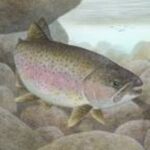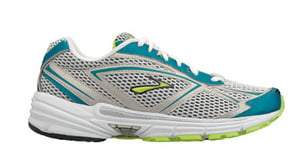When we go fishing, unless we use bobbers, the only way to tell when there is a bite is when the rod’s tip bends a few times in quick succession. In order to be able to feel those bites when fishing for predominantly smaller fish, like speckled trout or Arctic grayling, is by using a lighter weight tackle setup, with a light-action fly rod. The action in a fly fishing rod is, basically, how much pressure the rod can take before breaking.
There are three basic fly fishing rod action levels; fast action, or tip-flex, medium action or mid-flex, and slow action, or full-flex. You want to use the right flexibility, or action, for the environment you are fishing, like fast rapids or a slow moving, deep pool, ocean surf or calm lake shorelines. Also included in the equation is the type and size of fish, as some fish fight more aggressively, and some strike the bait harder than others five times their size.
Slow action fly rods will bend more acutely and freely, especially at the tip-end of the fly rod. These rods are meant for fishermen who will be needing to cast more accurately and in smaller locales. A slow action fly rod could be compared to an ultra-light or even a feather-light fishing rod and reel, and make catching smaller fish a lot more fun, and more challenging.
Medium action fly rods will offer a slower line speed than the heavy action rods, and is a more versatile and all-around usage fly rod. This provides action for all ranges of fish, weather and environments. From short and accurate casts to casts in heavy winds, the medium action fly rod is not only the best for beginners, it is also the most popular fly rod action sold.
Fast action fly rods will offer a more stiff rod, with only the tip of the rod bending during casting. Casts are further than the other action rods, with more line let out and a faster line speed. These types of fly rods are meant for more experienced fly fishermen who are after larger and trophy fish.
If you are fishing for bigger fish, like lake trout, Atlantic salmon, rainbow or steelhead trout, and other larger predatory fish, and more often than not find yourself fishing in open or extremely windy conditions, then you should start off with a fast action fly rod. If you prefer creeks and narrow rivers, fishing for smaller fish using lighter tackle, a slow action fly rod would be your best beginner fly rod.
If you are a beginner, you should start with a medium action fly rod, and then decide if you want more or less action, and more accuracy or further casts. Most fly fishermen will either carry all three action levels of fly rods, or the two extremes, slow and fast action.
Fish smart, fish informed. Fish on!



